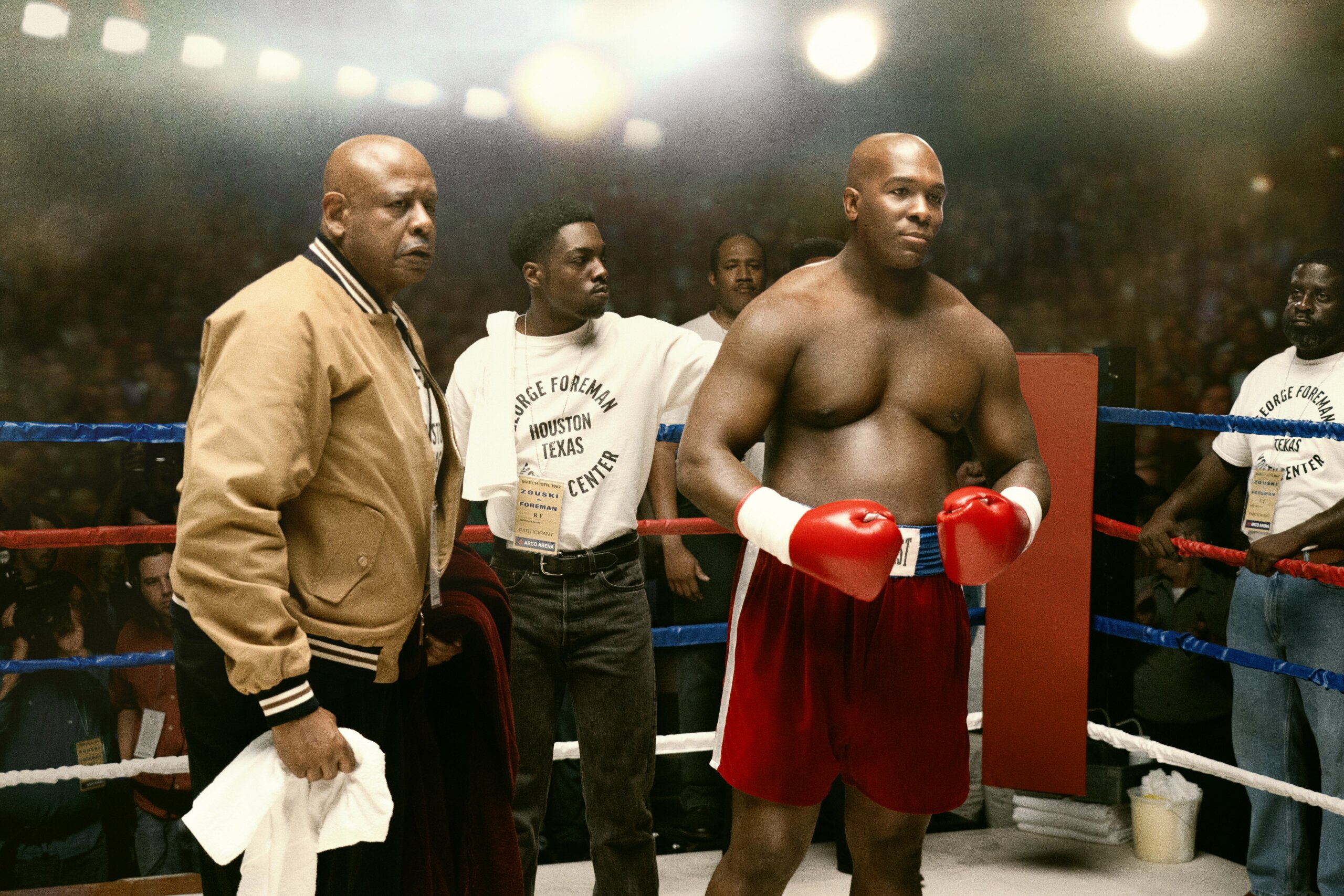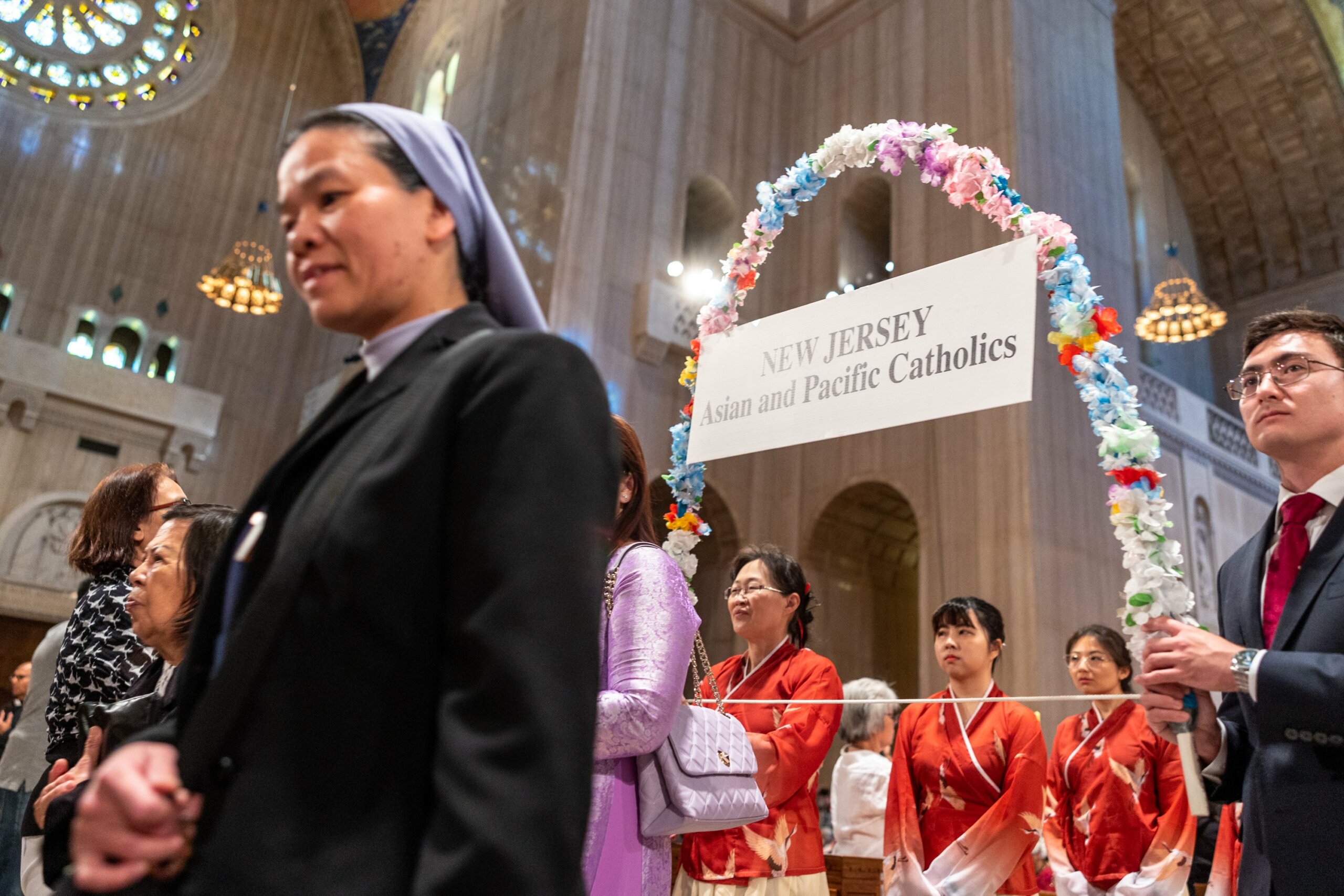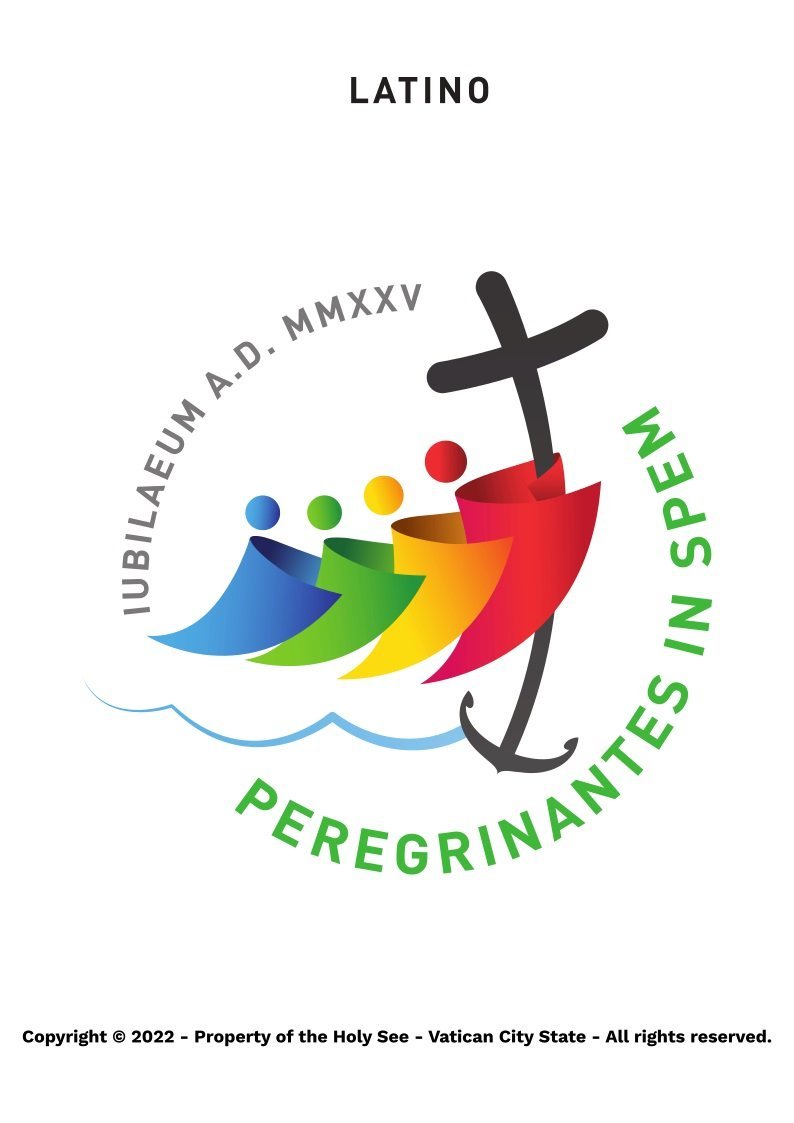As 10 members of the youth group from Our Lady of Vietnam Parish in Silver Spring, Maryland, dramatically played traditional drums at the front of the sanctuary of the Basilica of the National Shrine of the Immaculate Conception in Washington, the 20th annual Asian and Pacific Island Catholics Marian Pilgrimage May 6 opened with a procession of nearly two dozen Catholic communities with roots in that part of the world.
The 600 pilgrims who gathered at the basilica came from the District of Columbia, Maryland, Virginia, New Jersey, Pennsylvania and North Carolina. In the procession, they carried banners and wore traditional dress as they carried statues and portraits of Mary as the patroness of countries including the Philippines, Indonesia, Sri Lanka, China, Laos, Myanmar, India, Pakistan, Vietnam, Korea, Samoa and the U.S. island territory of Guam.
As the pilgrims marched toward the altar, a choir sang a Marian hymn in Tagalog, the national language of the Philippines, and the participants reverently placed their statues and portraits of Mary in the sanctuary and lined up their banners in an area behind the altar.
Celebrating a Mass for the pilgrims that afternoon, Washington Cardinal Wilton Gregory said, “Your presence is a magnificent witness of how all-encompassing are the places and nations where God’s word has been planted and flourished.”
In his homily, the cardinal also noted, “As our neighbors from Asia and the Pacific Islands assemble here in Mary’s Shrine, you continue to remind the entire church that God’s Spirit is present in every corner of our world. His divine glory is to be found in every part of our planet.”
The pilgrimage was sponsored by the Asian and Pacific Catholic Network, in collaboration with the U.S. Conference of Catholic Bishops’ Secretariat of Cultural Diversity in the Church and related offices of the Archdiocese of Washington and the Diocese of Arlington, Virginia.
After time for confession and the opening procession, a call to prayer featuring sacred songs and movements included expressive performances by dancers wearing traditional dress from the Samoan Catholic Community of Metro Washington; the Chinese Catholic Community of the Archdiocese of Newark, New Jersey; the Montagnard Catholic Community of Charlotte, North Carolina, representing AN Indigenous people from the highlands of central Vietnam; and St. Paul Chung Korean Catholic Church of Chantilly, Virginia.
Then members of the Camacho family, Filipino Catholics from All Saints Catholic Church in Manassas, Virginia, participated in crowning a statue of Mary.
“The Blessed Mother brings all her children together to her Son,” said Msgr. Vito Buonanno, the basilica’s associate rector and director of pilgrimages, as he welcomed the Asian and Pacific Island Catholics.
Before the Mass, the joyful mysteries of the rosary were prayed in different languages and led by members of the Couples for Christ from northern Virginia; the Korean Catholic community from New Jersey; the Burmese Catholic community from Metro Washington; the Asian Catholic community of the Archdiocese of Philadelphia; and the Syro-Malankara Eastern Catholic Rite from the Archdiocese of Washington.
Welcoming the pilgrims at the beginning of Mass, Msgr. Walter Rossi, the basilica’s rector, noted that Cardinal Gregory would mark the 50th anniversary of his ordination to the priesthood May 9, and the congregation applauded Washington’s archbishop for that milestone.
In his homily, Cardinal Gregory said Mary “has chosen to visit many of the places in this part of God’s world,” showing her maternal love and closeness as she reveals herself in the garb and appearance of the people she visits.
Noting the diversity and unity of the Asian and Pacific Island Catholics, the cardinal said, “The Spirit of God receives the gifts that we bring … (and) fashions those differences into an ever new and wonderful image of Christ fully alive and risen in the contemporary world.”
He emphasized that “the aim of the Church of Christ cannot be achieved by a secular ‘multiculturalism,’ as noble and much needed as such an accomplishment may be, especially at this time in history.”
Cardinal Gregory underscored how Catholics are a people who profess one faith, share one Eucharist and are sanctified by the sacraments. “Our unity is never simply tolerance, but oneness in faith and in grace,” he said.
The cardinal encouraged the Asian and Pacific Island Catholics to unite their hearts in prayer, asking God that peace and evangelical love be poured out on the lands and over the people represented there. Concluding his homily, the cardinal pointed out that, “After all, the Lord promised we would be one church, one people, his people, his beloved, and he will do it.”
Prayers of the faithful were then offered in Tagalog, Chinese, Indonesian, Burmese, a language of the Montagnards, the Konkani language of India, and then a final prayer in English, asking that God “grant the blessings we need as we journey together in his love.”
Then offertory gifts were brought to the cardinal by representatives of some of the communities wearing native dress.
Music at the Mass was led by a Filipino choir from Our Lady of Good Counsel Church in Vienna, Virginia; a Vietnamese choir from Our Lady of La Vang Mission in Chantilly, Virginia; and a Bengali choir from St. Camillus Parish in Silver Spring. According to the Mass program for the pilgrimage, participating communities also included Catholics with roots in Bangladesh, Cambodia, Japan, Thailand and Lebanon.
At a reception after the Mass, Wendi Williams, the executive director of the Office of Cultural Diversity and Outreach for the Archdiocese of Washington, called the gathering “a beautiful celebration and opportunity for us to be together in prayer.”
In an interview, Scalabrinian Sister Myrna Tordillo, a native of the Philippines, who is the assistant director for the Subcommittee on Asian and Pacific Island Affairs for the United States Conference of Catholic Bishops’ Secretariat of Cultural Diversity in the Church, said the annual pilgrimage offers a vibrant witness of the religious identity and cultures of the participating immigrant and refugee communities as they seek to pass on their Catholic faith to younger generations.
“We are united in our diversity through our faith and our devotion to our Blessed Virgin Mary who is our model and example of being a disciple to her Son, our Lord Jesus Christ,” she told the Catholic Standard, Washington’s archdiocesan newspaper.
That point was echoed by Fred Semendy, a native of India who is a retired physicist and engineer and who serves as the president of the Asian and Pacific Catholic Network. He said the gathering began as an effort to bring Asian Catholics together at the basilica to pray the rosary, and has continued for the past 20 years as an annual pilgrimage, a shared spiritual journey for those communities.
“Even though our cultures and languages are different, we are uniting under Jesus and Mary. Through Mary to Jesus, that is our goal,” he said.
— Mark Zimmermann, OSV News






